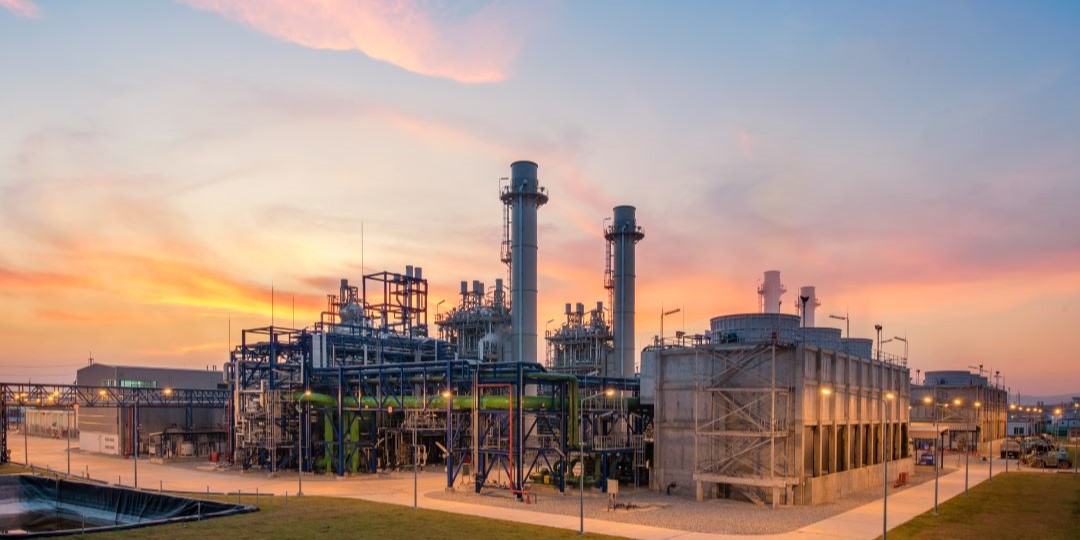by Andrew Markle – Senior Engineering, Engineering Services, NAES Corporation
In early 2016, a cogeneration plant in the Las Vegas area faced an uncertain future: its steam host had changed processes and would no longer require steam, putting the facility in jeopardy.
Without a host for steam or another form of thermal energy, the plant could no longer meet FERC’s criteria as a Qualifying Facility (QF). As a QF, it enjoyed incentives under federal, state and local laws that added considerably to its annual bottom line.

The owners decided to build a new steam host, ultimately settling on a water distillation plant. They contacted NAES Engineering Services, asking for our assistance in the capacity of an Owner’s Engineer (OE): we would develop the feasibility study, design the host facility, get it commissioned and into commercial operation – and, finally, secure the plant’s reinstatement as a FERC Qualifying Facility.
Through the tireless efforts of Brian Johnson, our assistant project manager; Sanjeev Jolly, our thermal performance expert; and Kelley Voss, who did much of the technical work and documentation for the QF application, we delivered value to the client in a number of key ways:
- Cut the estimated project execution time in half by using the extensive NAES fleet to source used equipment.
- Provided expert knowledge of FERC QF requirements acquired through developing and operating numerous QFs.
- Found an innovative end-use for the distilled water and worked with potential off-takers to explain the benefits, savings and required system modifications.
- Used our in-depth understanding of cooling and water treatment equipment to develop an innovative design for the new steam host that would stay within the parameters of the plant’s existing environmental permits.
- Responded nimbly when the original steam-host owners changed course at the last minute and decided not to accept wastewater from the new steam host nor to provide space for an evaporation pond.
- Met a critical December 31, 2017, ‘do or die’ deadline for getting the plant’s QF status reinstated.

To get around the long lead times for major equipment, we searched the NAES fleet for good used components, which we found at Ripon (California) and Birchwood (Virginia), two cogens that had put up distillation facilities. In fact, we owe a lot of our success in this Owner’s Engineer role to the collective networking resources we brought to bear on the project – both inside the NAES fleet and through external contacts. We were also able to tap into these later on when we had questions during commissioning.
One problem surfaced along the way that the plant’s owners hadn’t considered: there was no visible demand for distilled water in the Las Vegas area. In our role as OE, however, we put our heads together and brainstormed the issue. There was always a need for demineralized water for use in cooling towers, and power plants were by no means the only facilities that had cooling towers.
We did some BD work on behalf of our client, making phone calls and pounding the Las Vegas pavement. We explained to potential off-takers the benefits of using distilled (rather than demineralized) water, the savings we could offer, and the slight system modifications it would require. Before long, we had lined up two launch customers: a global consumer products conglomerate had an ice cream manufacturing facility nearby that required cooling tower makeup; and one of the large casino hotels on the Strip, with its massive HVAC plant, also had a need.
Soon, however, another problem challenged our burgeoning OE skills. The former steam-host owner had originally agreed to accept wastewater from the new distillation plant, but they surprised us by changing their tune late in the game. We were already pouring concrete by this time, but in light of this development, we decided it would make sense, both technically and commercially, to do a ‘180’ and redesign the project as a zero-liquid-discharge plant.
We finalized the redesign in fairly short order and were able to complete construction in four months. We still had the major components on the trucks, which expedited the change-up. But time was of the essence by this point, as the plant was now in danger of losing its QF status.

However, with help from the NAES network in solving some startup and commissioning issues, we managed to get the new facility up and running before the December 31, 2017, deadline. We then filed for reinstatement of the plant’s QF status, which was granted by FERC. This preserved the market incentives and tariff reductions that brought them a $12 million offset to their annual operating costs. If we had missed this deadline, the
facility would have permanently lost its QF status and likely been put out of business.
Our in-depth knowledge of equipment, our strategic use of a broad network — together with our developing Owner’s Engineer capabilities — made for a formidable combination. For one thing, we had an intuitive sense of what things were really going to cost for this project. With the vast resources of the NAES fleet and engineering network at our fingertips, we were able to reach out to real people who provided us with real equipment in real time. This made for a much better experience than if we’d been floating out there on our own taking shots in the dark and hoping for the best.
